Vlaamse Radio- en Televisieomroeporganisatie
The Vlaamse Radio- en Televisieomroeporganisatie (Flemish Radio and Television Broadcasting Organisation), or VRT (Dutch: [ˌveːjɛrˈteː]), is the national public-service broadcaster for the Flemish Community of Belgium.
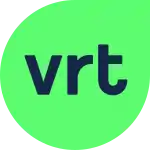 | |
| Type | Terrestrial radio and television |
|---|---|
| Country | |
| Availability | Belgium |
| Owner | Flemish Community |
Launch date | 1930 (radio) 1953 (television) |
Former names | NIR (1930–1960), BRT (1960–1991), BRTN (1991–1998) |
Official website | www.vrt.be |
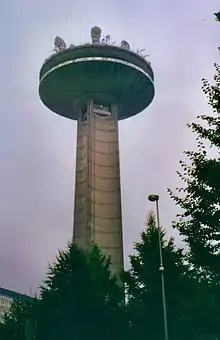
History
VRT is the successor to the Nationaal Instituut voor de Radio-omroep (NIR, 1930–60), Belgische Radio- en Televisieomroep (BRT, 1960–1991), and Belgische Radio- en Televisieomroep Nederlandstalige Uitzendingen (BRTN, 1991–1998). The NIR (known as the INR in French) and BRT (RTB in French) had each been single state-owned entities with separate Dutch- and French-language production departments. However, in 1977, as part of the ongoing state reform in Belgium broadcasting became reserved to the language communities rather than the national government in 1977. Accordingly, BRT/RTB went their separate ways in 1977. While the former French half changed its name to RTBF in 1977, the Dutch side retained the BRT name until becoming BRTN in 1991. However, the two broadcasters share production facilities on Auguste Reyerslaan (French: Boulevard Auguste Reyers) in Brussels.
The final renaming to VRT, on 1 January 1998, followed a change in the organization's legal status: from being part of a semi-governmental entity (a parastatale in Belgian terminology) it had, on 16 April 1997, became a publicly owned corporation (NV van publiek recht) in its own right.
As successors to the NIR/INR, VRT and its counterpart in the French Community of Belgium, RTBF, share the Belgian membership in the European Broadcasting Union (EBU) – an association of public broadcasters in the countries of Europe and the Mediterranean rim that, amongst other activities, organizes the annual Eurovision Song Contest.
With the ending of its television monopoly – marked by the creation of VTM, a commercial television company that initially captured more than half of VRT's audience – the public broadcaster has been compelled to fight back, and part of its successful response has been the use of external production houses such as Woestijnvis, the creator of such formats as The Mole (De mol) and Man bites dog (TV series) (Man bijt hond).
Television channels
Television channels are transmitted on:[1]
- Cable: analog and digital on all Belgian and Dutch cable providers;
- IPTV to all major Belgian DSL providers (Proximus, Orange, Scarlet);
- Satellite with paid TV Vlaanderen subscription (encrypted DVB-S2 using SES Astra network).
- Terrestrial with paid TV Vlaanderen subscription (encrypted DVB-T2 using Norkring network) in Flanders and paid Digitenne subscription (encrypted DVB-T2) in the Netherlands. Free to air DVB-T broadcast by VRT was discontinued on 1 December 2018.[2][3]
- Some programmes are broadcast worldwide on the Dutch/Flemish BVN free-to-air satellite channel
Current channels
- Één (Dutch for: one), the main channel, formerly known as VRT TV1. Started in 1953 on VHF channel 10. In PAL colour since 1971. In 1977 the transmission standard changed from Belgian 625 to European CCIR) standard.
- Canvas, the quality TV channel. Started in 1997.
- Ketnet, the children's channel. Formerly took up Canvas's channel from 6am to 8pm.
- Sporza, the sports channel. Sport programs (like cycling, football, tennis...) are aired under the Sporza name but on the channels of Één, Canvas or Ketnet. During big sport events (like the Olympics) it is not uncommon for two or more channels to simultaneously air Sporza.
Former channels
- BRTN TV2 was launched on 26 April 1977 as BRT TV2. BRT(N) TV2 broadcast Terzake and Het Journaal 8 uur until Sunday, 30 November 1997, when TV2 ceased transmission. On Monday 1 December 1997, BRTN TV2 was split into two channels: BRTN Ketnet and BRTN Canvas. The two channels were part of BRTN until 1998 – Canvas and Ketnet are still broadcasting as part of VRT2.
- OP12 (Dutch for: on twelve) was a channel used as backup in the event of primetime shortage. Mostly used for excess sport- and culture programs. It was discontinued in 2014.[4]
Radio channels
The VRT broadcasts radio channels in both analog format (FM) and digital format (using DAB+). All channels are also broadcast live over the Internet.
International broadcasting was done via VRT's Radio Vlaanderen Internationaal (RVi).
Analog and digital
- Radio 1 - news, information and cultural channel
- Radio 2 - popular music
- Klara - classical music channel (formerly Radio 3)
- Studio Brussel - young and alternative channel
- MNM - hit music (formerly radio Donna)
Digital-only channels
- Klara continuo - uninterrupted classical music
- MNM Hits - uninterrupted popular music
- VRT NWS - latest news programme continuously repeated
Streaming-only channels
- Radio 1 Classics - uninterrupted classics songs
- Radio 2 Bene Bene - uninterrupted music from Flemish artists
- Ketnet Hits - uninterrupted kids music
- MNM UrbaNice - uninterrupted urban music
- MNM 9000's - uninterrupted popular music from the nineties and nillies
- Studio Brussel De Tijdloze - uninterrupted alternative classics
- Studio Brussel Hooray - uninterrupted hiphop music
- Studio Brussel Bruut - uninterrupted heavy music
TMC
They also have a TMC service transmitted on Radio 2.
Logo history
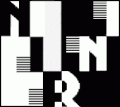 NIR logo (1953–1960)
NIR logo (1953–1960) VRT's third and older logo used from 1960 to 1978.
VRT's third and older logo used from 1960 to 1978.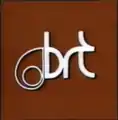 BRT logo (1977–1991)
BRT logo (1977–1991) BRTN logo (1991–1998)
BRTN logo (1991–1998) VRT logo (1998–2002)
VRT logo (1998–2002).svg.png.webp) VRT's sixth and previous logo used from 7 January 2002 to 21 June 2017.
VRT's sixth and previous logo used from 7 January 2002 to 21 June 2017.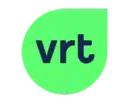 VRT's seventh and current logo since 22 June 2017.
VRT's seventh and current logo since 22 June 2017.
See also
- List of radio stations in Belgium
- List of television stations in Belgium
- Bert De Graeve, former CEO
- Tony Mary, former CEO
References
- "Televisie kijken" [Watch TV] (in Dutch). VRT.
- "VRT News, May 17 2018". VRT News.
- "VRT blijft via de ether uitzenden" [VRT to keep broadcasting via ether]. Totaal TV (in Dutch). 7 July 2018.
- "OP12". VRT. Archived from the original on 3 June 2016. Retrieved 9 May 2016.
- 16 April 'Belgian pubcaster to launch HD Channel' via Broadband TV News
External links
![]() Media related to Vlaamse Radio- en Televisieomroeporganisatie at Wikimedia Commons
Media related to Vlaamse Radio- en Televisieomroeporganisatie at Wikimedia Commons
- Official website
 (in Dutch)
(in Dutch) - VRT NWS(in Dutch) news site of VRT